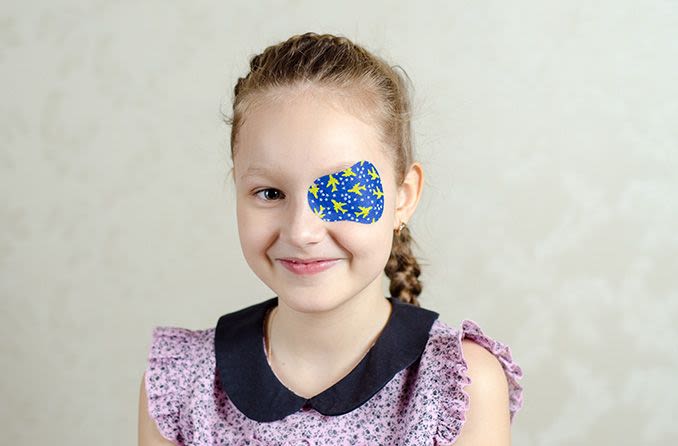Amblyopia treatments that can be done at home

Can I treat my child's lazy eye at home?
Amblyopia, more commonly known as lazy eye, often can be treated at home with corrective lenses, patching, eye drops and vision therapy.
In some cases, lazy eye must be treated surgically before treatments like patching, drops or corrective lenses can be effective.
WHAT'S THE BEST LAZY EYE TREATMENT FOR YOUR CHILD? Call you eye doctor and schedule a virtual visit or an in-office eye exam.
Is your child's at-home amblyopia treatment working? Check with your eye doctor.
Who does lazy eye affect?
Lazy eye, which affects about 2% to 3% of people in the U.S., typically develops in childhood.
A common cause of amblyopia is misalignment of the eyes — a condition called strabismus.
Children with lazy eye should be treated as early on as possible to prevent long-term effects. Now let's take a look at some of the various at-home lazy eye treatments:
At-home lazy eye treatments
Some lazy eye treatments are less involved than others but the following methods can be at-home therapies:
CORRECTIVE LENSES: Your child's amblyopia may be easily corrected with glasses or contact lenses. PATCHING: In this amblyopia treatment, the stronger eye is covered to make the “lazy eye” work harder.
EYE DROPS: One atropine eye drop is placed in the “good eye” each day. An advantage of atropine drops is that once the daily drop is given, it does not require much more maintenance for the rest of the given day.
VISION THERAPY: Like physical therapy for your eyes, vision therapy for amblyopia involves lazy eye exercises specifically designed for your child's individual needs. Vision therapy often includes tools such as filters, prisms, computer-assisted visual activities, metronomes and balance boards. Therapy sessions and tools vary from patient to patient.
VIDEO GAMES: Your child's amblyopia treatment may include video games and apps designed with special exercises to improve lazy eye and tailored to different age groups (preschool, school-age and adults).
When to see an eye doctor
Early detection of lazy eye is essential for the best treatment outcomes. Schedule routine eye exams for you children with an eye doctor near you beginning at 6 months of age and again at age 3 to prevent vision problems from lazy eye.
If your child is diagnosed with amblyopia, which treatment is best for him or her? And if your child is currently being treated for lazy eye, is it working? Might some other amblyopia treatment work better?
CONSULT WITH YOUR EYE DOCTOR ABOUT YOUR CHILD'S LAZY EYE: Call your eye doctor and schedule a virtual visit or in-office eye exam.
Page published on Sunday, May 3, 2020




